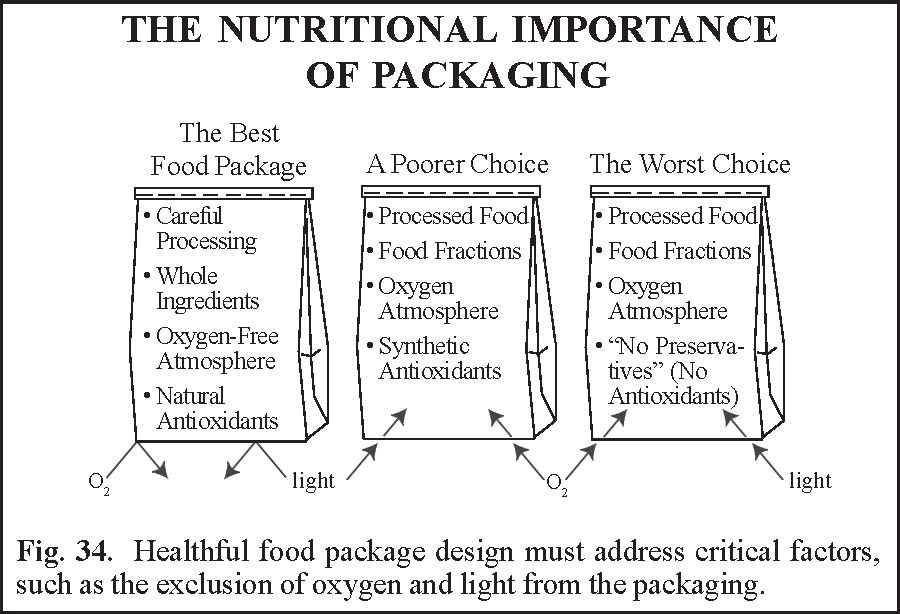— 19 —THE "PET FOODS IN PAPER BAGS CAN HAVE SHELF-LIVES UP TO A YEAR OR MORE" MYTHThe length of time food remains edible is called "shelf-life." The race for ever-greater shelf-life has turned much of modern food processing into mortuary, rather than life science.Rocks and cardboard keep well in paper bags for a year. Since when do highly nutritious foods do so? Pet foods are comprised of grains, dairy products, meats, oils, fats, vitamins and minerals, all of which – unless they are altered significantly, which nutritionally neutralizes them – deteriorate with time. Notice what happens to foods which you know to be highly nutritious. Can you put a steak, some yogurt, cheese, bread, vegetable oil and cereal in a paper bag and leave it in your cupboard for six months or a year and then find it suitable to eat? Hardly. Leaving such things exposed in this way for even a day is unwise. Real, nutritious foods are fragile, and easily deteriorate in the presence of oxygen and light.* If something in a paper bag lasts a year or more on a shelf, is it food or an embalmed food artifact? 
Food processors are not magicians. Something must give to make meat, eggs, milk, etc. last in a paper bag. What gives is nutrition. Health is, in effect, traded for shelf-life. Consumers must therefore use the same common sense about how their pet foods are packaged that they'd use about foods which they, themselves, consume. To properly preserve fragile nutritional value, foods must be carefully prepared from fresh whole ingredients preserved with natural antioxidants, and rapidly packaged in oxygen-free and light barrier packages. Small portion packing is best (that's not a fifty-pound sack), and unused portions should be tightly sealed, then refrigerated or frozen. 
* Loken JK, The Haccp Food Safety Manual, 1995.
|



